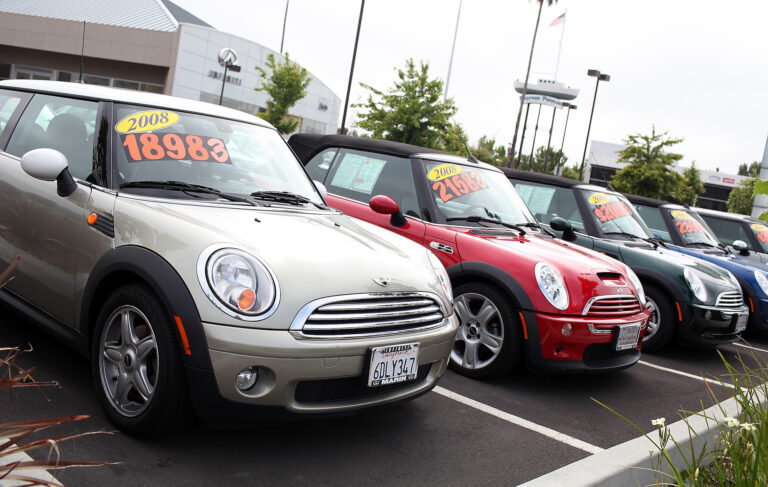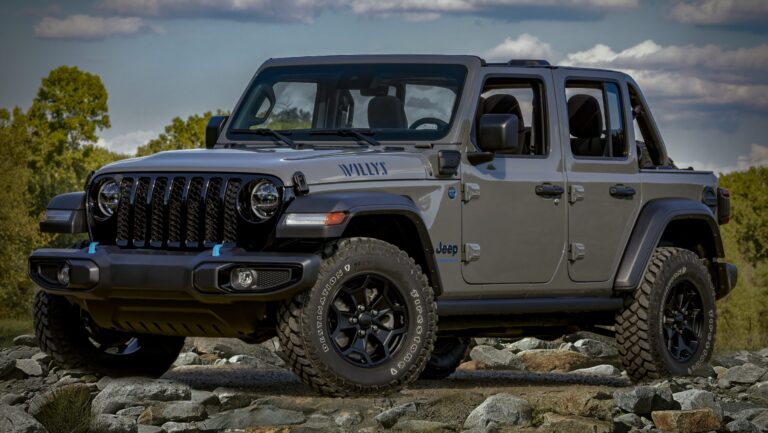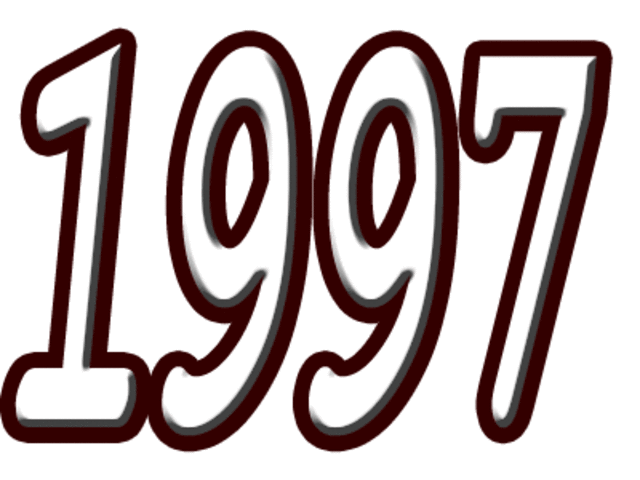How Much To Lift A Jeep Wrangler Unlimited: A Comprehensive Guide to Elevating Your Ride
How Much To Lift A Jeep Wrangler Unlimited: A Comprehensive Guide to Elevating Your Ride jeeps.truckstrend.com
The Jeep Wrangler Unlimited, with its iconic design and unparalleled off-road prowess, is a vehicle built for adventure. For many owners, however, the journey doesn’t stop at the dealership. Lifting a Jeep Wrangler Unlimited is one of the most popular and impactful modifications, transforming its stance, enhancing its capability, and allowing for larger tires that unlock new levels of off-road exploration. But "how much" to lift is far from a simple question; it’s a critical decision that balances aesthetics, performance, budget, and practicality.
Lifting, in this context, refers to increasing the ground clearance and often the overall height of the vehicle, primarily through suspension modifications. This isn’t just about looking cool; it’s about improving approach, departure, and breakover angles, preventing undercarriage damage, and creating the necessary clearance for bigger, more aggressive tires. This comprehensive guide will delve into the various aspects of lifting your Jeep Wrangler Unlimited, helping you determine the ideal "how much" for your specific needs and aspirations.
How Much To Lift A Jeep Wrangler Unlimited: A Comprehensive Guide to Elevating Your Ride
Understanding Lift Kits: More Than Just Height
Before deciding on a lift height, it’s crucial to understand what a lift kit entails. It’s not just about slapping on taller springs; a complete lift system often involves a suite of components designed to maintain proper suspension geometry, ride quality, and safety.
- Spacer Lifts (Budget Boosts): These are the simplest and most affordable. Urethane or aluminum spacers are placed above or below the factory coil springs to add height. They retain the factory springs and shocks, offering minimal performance improvement but providing clearance for slightly larger tires (e.g., 33-inch). They are ideal for correcting the factory rake or achieving a mild lift without significantly altering ride quality.
- Coil Spring Lifts: The most common type, these kits replace your factory coil springs with taller, often firmer, aftermarket springs. They usually include new, longer shocks to accommodate the increased travel. Depending on the height, they may also come with components like track bar relocation brackets, bump stop extensions, and sway bar links. These lifts significantly improve articulation and ride quality compared to spacer lifts and are available in various heights, typically from 2.5 to 4 inches.
- Long Arm Lifts: Designed for serious off-road enthusiasts and lifts typically over 4 inches, long arm kits replace the factory short control arms with much longer ones that mount further back on the frame. This design significantly improves articulation, provides a smoother ride on and off-road, and maintains better caster angles at extreme suspension droop. However, they are considerably more expensive, complex to install, and might require cutting and welding on the frame.
- Body Lifts: Unlike suspension lifts, body lifts do not increase ground clearance. Instead, they raise the vehicle’s body from its frame using puck-style spacers. This creates additional space between the body and frame, primarily to accommodate larger tires without needing a full suspension lift. Body lifts are generally limited to 1-2 inches and are often used in conjunction with a mild suspension lift.

Determining Your "How Much": Factors to Consider
The "how much" to lift your Jeep Wrangler Unlimited is a highly personal decision driven by several key factors.
-
Intended Use: This is paramount.

- Daily Driver/Light Trails: A 1-2.5-inch lift might suffice, offering improved aesthetics and clearance for moderate tires without compromising on-road manners.
- Moderate Off-Roading/Overlanding: A 2.5-3.5-inch lift is often the sweet spot, providing significant clearance for 35-inch tires and excellent articulation for challenging trails.
- Serious Rock Crawling/Extreme Trails: 4 inches or more, often with long arm kits, will be necessary for 37-inch+ tires and maximum articulation. This level of modification comes with significant additional costs and potential complexities.

-
Desired Tire Size: Often, the tire size you want to run dictates the minimum lift height.
- 33-inch tires: Can often fit with a leveling kit or a 1.5-2.5-inch lift.
- 35-inch tires: The most popular choice, typically requires a 2.5-3.5-inch lift.
- 37-inch tires: Generally needs 4 inches or more of lift, often combined with high-clearance fenders. Be prepared for significant additional modifications like re-gearing, stronger axle shafts, and steering upgrades.
-
Budget: Lift kits vary wildly in price. Remember that the lift kit itself is often just the beginning. Larger tires, wheels, re-gearing, driveshafts, and installation costs can quickly escalate the total investment.
-
Skill Level (DIY vs. Professional Installation): A basic spacer lift might be a weekend DIY project, but a complex long arm system requires specialized tools, expertise, and often professional installation.
-
Desired Ride Quality: Taller lifts, especially those with stiffer springs or poor shock choices, can negatively impact on-road ride comfort. Research reputable brands known for good ride quality.
Common Lift Heights and What They Offer
Let’s explore the practical implications of different lift heights for the Jeep Wrangler Unlimited (JKU/JLU platforms):
-
1-2 Inch Lift (Leveling Kits/Mild Spacers):
- Benefits: Corrects the factory front-end rake (where the front sits lower than the rear), allows for 33-inch tires with minimal rubbing (often requires specific wheel backspacing), maintains near-factory ride quality, very budget-friendly.
- Considerations: Minimal ground clearance gain, primarily aesthetic or for minor tire fitment. No significant off-road performance improvement.
-
2.5-3.5 Inch Lift (The Sweet Spot):
- Benefits: The most popular choice for a reason. Comfortably fits 35-inch tires, provides a noticeable increase in ground clearance for improved off-road capability, offers a good balance between on-road manners and off-road articulation. Many reputable brands offer excellent kits in this range.
- Considerations: For JK models, exhaust spacers or modifications might be needed to clear the front driveshaft. For both JK and JL, adjustable front track bars are recommended to re-center the axle, and adjustable control arms may be desired to correct caster for better steering feel. Re-gearing is highly recommended when moving to 35-inch tires for optimal performance, fuel economy, and longevity of drivetrain components.
-
4-6 Inch Lift (Serious Off-Road Performance):
- Benefits: Allows for 37-inch or larger tires (often with flat/high-clearance fenders), provides maximum ground clearance and articulation for extreme trails and rock crawling.
- Considerations: This level of lift requires significant additional investment beyond the lift kit itself. New driveshafts (especially the front) are almost mandatory due to extreme operating angles. Adjustable control arms are essential to correct geometry. Re-gearing is absolutely critical with 37-inch+ tires. Steering components, axle strength, and brake upgrades may also be necessary. On-road handling can be significantly affected if not properly set up, and it’s generally not recommended for daily drivers without extensive, well-engineered modifications.
Beyond the Lift Kit: Essential Complementary Modifications
Lifting your Jeep is rarely a standalone modification. To maximize performance, safety, and longevity, consider these essential complementary upgrades:
- Tires and Wheels: Larger tires are the primary reason for lifting. Ensure your new wheels have the correct backspacing (typically 4.5 inches or less) to prevent rubbing on suspension components.
- Re-gearing: This is crucial when installing larger tires. Larger tires effectively raise your final drive ratio, making the engine work harder, reducing acceleration, and impacting fuel economy. Re-gearing restores the optimal power band, reduces strain on the engine and transmission, and is vital for off-road performance.
- Adjustable Track Bars: Lifts shift the axle off-center. Adjustable track bars allow you to re-center the axles, preventing "dog tracking" and ensuring proper suspension geometry.
- Adjustable Control Arms: These allow you to fine-tune caster and pinion angles, which is critical for steering stability ("Death Wobble" prevention) and proper driveshaft alignment, especially with higher lifts.
- Brake Line Extensions: Longer brake lines ensure your brakes function properly at full suspension droop, preventing damage or failure.
- Driveshafts: For lifts of 3.5 inches or more (especially on JKs), the stock driveshafts can operate at extreme angles, leading to premature wear or failure. Upgrading to stronger, longer-travel aftermarket driveshafts is often necessary.
- Steering Stabilizer: A high-quality aftermarket steering stabilizer can help dampen road feedback and reduce bump steer, contributing to a more stable ride.
- High-Clearance Fenders: For those running 37-inch+ tires, aftermarket flat or high-clearance fenders can provide additional clearance without requiring an excessively tall suspension lift.
The Installation Process: DIY vs. Professional
- DIY Installation: If you have mechanical aptitude, the right tools (jack, jack stands, torque wrench, various sockets/wrenches, spring compressors for some kits), and a clear understanding of the instructions, installing a simpler lift (spacer or 2.5-inch coil spring) can be a rewarding weekend project. Safety is paramount; always use jack stands and follow torque specifications.
- Professional Installation: For larger, more complex lifts (especially 4+ inches or long arm kits), or if you lack the time, tools, or confidence, professional installation is highly recommended. Experienced shops have the specialized tools, knowledge, and alignment equipment to ensure the job is done correctly and safely. While more expensive upfront, it can save you headaches and potential costly repairs down the line.
Post-Installation: Regardless of who installs it, always get a professional alignment after a lift. Also, re-torque all bolts after 500 miles, as components can settle.
Potential Challenges and Solutions
- "Death Wobble": A violent, uncontrollable shaking of the front end, typically experienced at highway speeds after hitting a bump. It’s usually caused by loose or worn steering/suspension components or improper geometry (e.g., incorrect caster, misaligned track bar). Proper installation, quality components, and a professional alignment are key to preventing it.
- Rubbing: Tires rubbing on fenders or control arms. Solution: Correct wheel backspacing, proper bump stop extension, and potentially high-clearance fenders.
- Poor Ride Quality: Can result from cheap shocks, incorrect spring rates for your vehicle’s weight (e.g., heavy bumpers/winch), or improper suspension geometry. Solution: Invest in quality components from reputable brands and ensure proper setup.
- Increased Component Wear: Lifting changes angles and stresses on drivetrain components (driveshafts, ball joints, unit bearings). Solution: Proactive maintenance, upgrading weaker components, and ensuring proper geometry.
- Legality and Insurance: Check your local laws regarding maximum lift height. Inform your insurance company of modifications to ensure proper coverage.
Price Table: Estimated Costs for Lifting a Jeep Wrangler Unlimited
This table provides estimated costs for common lift types. Please note these are estimates only and can vary significantly based on brand, component quality, geographic location, and labor rates. These prices generally cover the lift kit and basic installation, but do not include the cost of new tires, wheels, re-gearing, driveshafts, or other necessary upgrades that can easily double or triple the total investment.
| Type of Lift Kit | Lift Height (Approx.) | Key Components Included (Typical) | Estimated Kit Price (USD) | Estimated Installation Cost (USD) | Total Estimated Cost (USD) | Pros | Cons |
|---|---|---|---|---|---|---|---|
| Leveling Kit / Spacer Lift | 1-2 inches | Coil spacers (front/rear), extended sway bar links (optional) | $150 – $500 | $200 – $400 | $350 – $900 | Most affordable, corrects rake, maintains factory ride. | Minimal performance gain, no new components. |
| Budget Coil Spring Lift | 2-2.5 inches | New coil springs, new shocks, bump stop extensions | $400 – $800 | $300 – $600 | $700 – $1400 | Affordable suspension upgrade, better ride than pure spacers. | Limited articulation, may still need other upgrades. |
| Mid-Range Coil Spring Lift (Short Arm) | 2.5-3.5 inches | New coil springs, new shocks, track bar relocation, bump stops, extended sway bar links. | $800 – $2,500 | $600 – $1,200 | $1,400 – $3,700 | Popular choice, good balance of performance/cost, fits 35s. | May need exhaust mods (JK), control arm correction for optimal geometry. |
| High-End Coil Spring Lift (Short Arm) | 3.5-4 inches | New springs, high-performance shocks, adjustable track bars, adjustable control arms, brake lines, sway bar links. | $2,000 – $4,000 | $800 – $1,500 | $2,800 – $5,500 | Excellent performance, fits 37s (with high-clearance fenders), improved articulation. | Significant investment, potential driveshaft issues, other mods likely needed. |
| Long Arm Lift System | 4-6+ inches | Long control arms, new cross member, springs, high-performance shocks, adjustable track bars, extended brake lines, custom exhaust. | $4,000 – $8,000+ | $1,200 – $2,500+ | $5,200 – $10,500+ | Maximum articulation, stability at speed, premium performance. | Very expensive, complex installation, requires many other substantial mods (driveshafts, re-gearing, etc.). |
Note: These prices do not include the cost of tires, wheels, re-gearing (often $1,500-$3,000+ per axle), driveshafts ($500-$1,000+ each), or other potential upgrades like axle reinforcement, steering components, etc. Always budget significantly more than just the lift kit itself.
Frequently Asked Questions (FAQ)
Q: Will lifting my Jeep void my warranty?
A: Modifying your Jeep, including lifting it, can affect your warranty, especially on parts directly impacted by the modification. For example, if a suspension component fails after a lift, the warranty claim might be denied. However, the Magnuson-Moss Warranty Act generally prevents manufacturers from voiding an entire warranty due to an aftermarket part unless they can prove the part caused the failure. It’s best to check with your dealership and understand their policy.
Q: Do I need to re-gear after lifting?
A: If you install significantly larger tires (e.g., moving from 32-inch stock to 35-inch or 37-inch), re-gearing your axles is highly recommended, if not mandatory. It restores power, improves fuel economy, and reduces strain on your engine and transmission, especially important for off-roading.
Q: Can I install a lift kit myself?
A: A basic spacer lift or a 2.5-inch coil spring lift is often a feasible DIY project for someone with mechanical experience and the right tools. Larger, more complex lifts (4+ inches, long arm kits) are best left to professional shops due to the specialized tools, welding, and precise measurements required.
Q: What’s the biggest tire size I can run with X lift?
A:
- 1-2 inch lift: Up to 33 inches (with proper wheel backspacing).
- 2.5-3.5 inch lift: Up to 35 inches (most common setup).
- 4+ inch lift: Up to 37 inches (often requires flat/high-clearance fenders) or even 40+ inches (with significant additional modifications).
- Always consider wheel backspacing to avoid rubbing.
Q: Does lifting affect fuel economy?
A: Yes. Lifting increases aerodynamic drag, and installing larger, heavier tires significantly increases rolling resistance. Both factors will reduce your fuel economy. Re-gearing can help mitigate some of the negative effects but won’t fully compensate.
Q: What is "Death Wobble" and how can I avoid it?
A: Death Wobble is a violent, uncontrollable oscillation of the front axle, usually triggered by hitting a bump at speed. It’s often caused by loose, worn, or improperly aligned steering and suspension components (e.g., track bar, ball joints, tie rod ends, control arms). To avoid it, ensure all components are in good condition, and that your lift is installed correctly with proper geometry, including correct caster and a centered track bar.
Q: Is a body lift the same as a suspension lift?
A: No. A suspension lift increases ground clearance by raising the frame and axles higher off the ground. A body lift only raises the body from the frame, providing clearance for larger tires without increasing ground clearance. They serve different purposes and are often used together for specific goals.
Q: How does a lift affect my Jeep’s on-road handling?
A: A well-engineered lift kit, properly installed with correct geometry (caster, pinion, track bar centering), can maintain or even improve on-road handling over stock, especially with quality shocks. However, poor quality kits, incorrect installation, or excessively tall lifts (4+ inches) can lead to a less stable, bumpier, or morewandering ride, requiring constant steering input.
Concluding Summary
Deciding "how much" to lift your Jeep Wrangler Unlimited is a journey that requires careful consideration of your intended use, desired tire size, and budget. From subtle leveling kits for a daily driver to aggressive long arm systems for extreme off-roading, there’s a lift solution for every enthusiast. Remember that a lift kit is often just the beginning; complementary modifications like re-gearing, upgraded driveshafts, and proper wheel selection are crucial for optimal performance, safety, and longevity.
By thoroughly researching, planning your modifications, and consulting with reputable shops or experienced fellow Jeep owners, you can transform your Wrangler Unlimited into an even more capable and impressive machine, ready to conquer any trail and truly elevate your off-road adventures. The right lift doesn’t just raise your Jeep; it raises your experience.






